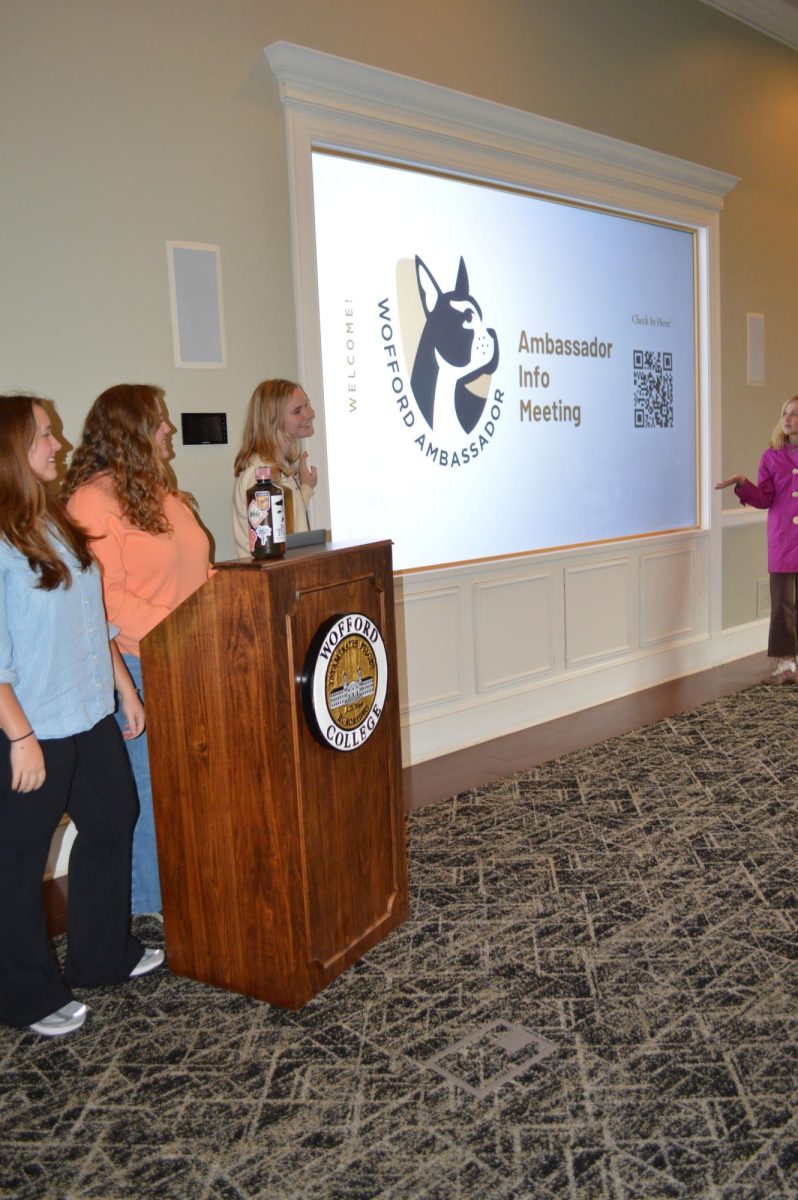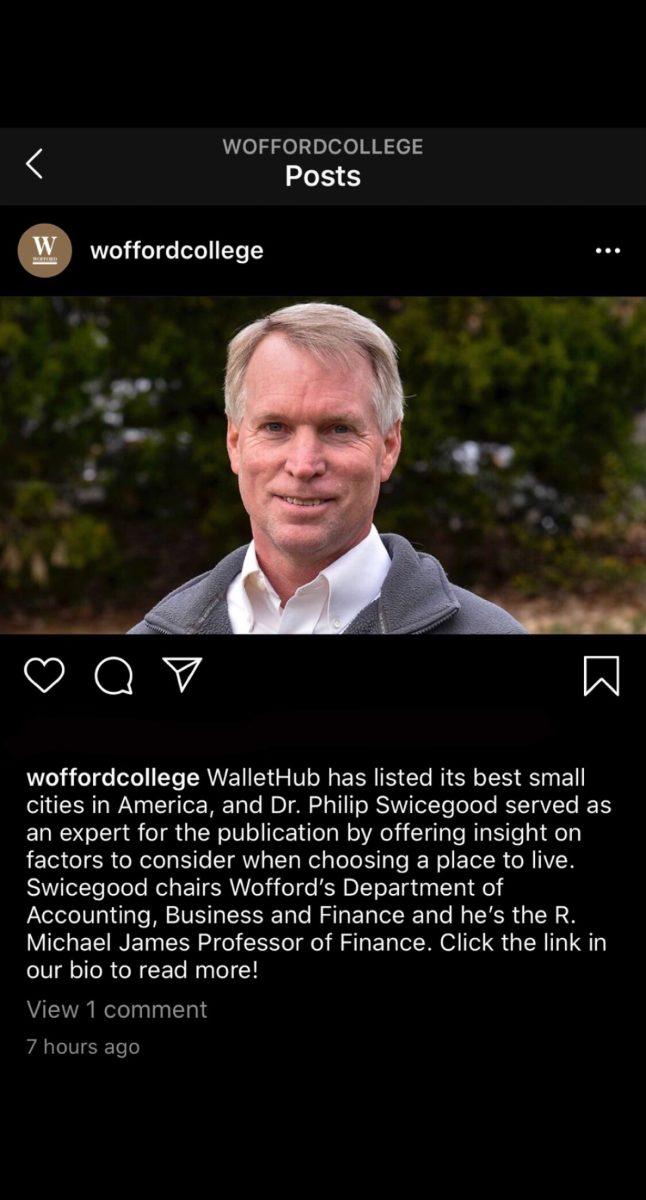Article promoted by Wofford criticized for racist ideologies
On Tuesday, Oct. 20, Wofford College’s official social media accounts advertised a WalletHub article, “2020’s Best Small Cities in America.” The article was shared because Philip Swicegood, R. Michael James professor of finance served as an expert for the publication.
The problem?
The WalletHub article ranked Wofford’s hometown of Spartanburg, South Carolina in the bottom 4 percent of more than 1,200 small cities.
The methodologies that the article used to rank the supposed “best cities” in the country are seemingly harmless, yet in actuality, perpetuate structurally racist ideas. Metrics, that, in our structurally racist society, have generally been accepted as appropriate, objective measures of what makes a place appealing to live.
For example, some of the metrics employed are safety, the percent of the population in poverty, the percent of the population that is insured, income growth, population with high school diplomas and crime rates.
Perhaps the clearest indication of the racist ideology behind the ranking system is that the 20 cities that are “best,” according to the list, are cities that are predominantly white, with one possible exception.
What does promoting the WalletHub article suggest, then, about the way that Wofford, a predominantly white institution, views the surrounding Spartanburg neighborhoods of color?
The answer is not simple, but one thing is clear: the Wofford bubble is being happily maintained.
“This article essentially helps guide the privileged toward homogenous communities of privilege where the effects of structural racism can be blissfully ignored,” said an anonymous faculty member.
Another faculty member who preferred anonymity argues that the article “sends a message to people who are not white that their city isn’t safe.”
The WalletHub article and post were removed from Wofford’s social media accounts within a matter of days, after conversations between the Office of Marketing and Communications and a concerned faculty member.
The Wofford College Office of Mar- keting and Communications responded, in regards to promoting the WalletHub article:”An article was shared through the college’s social media accounts to promote contributions that a faculty member made to a publication’s list of the best small cities in the United States. The college often shares stories involving faculty research and contributions to publications.”
“When another faculty member expressed concerns about such lists and how the methodologies used can reinforce some of the systemic issues that many of us are addressing, the post was removed because the intent was to highlight Dr. Philip Swicegood, an excellent professor whose research was featured nationally, not to hurt others in the Wofford community,” they com- mented.
They continued: “We, however, missed an opportunity to have a larger conversation. WalletHub and other listings are very common. Many people with good intentions, including many of us in the OMC, might be unaware of the concerns associated with such lists. In hindsight, we should have encouraged more dialogue so more people will become aware. Going forward, we hope our community will embrace more opportunities to en- courage conversation and education.”
The WalletHub article is a shining example of how structural racism has become normalized in Wofford’s culture.
From one of the anonymous faculty members: “This post exhibits we have yet to establish any administrative structure that prevents communication that can be read as supporting structural racism from being posted, shared, and/or printed.”
The question then becomes: how would we prevent this from happening again?
A possible solution might be found from a Wofford Anti-Racism Coalition demand, calling for the addition of a Chief Diversity Office or a Vice President of Justice, Equity, Diversity and Inclusion to the President’s Cabinet, and at least one position in every divi- sion/department on campus designed to promote such initiatives.
One of the anonymous faculty members expanded upon this idea, “This structure could easily be built by have a position in the administration, likely held by a BIPOC, whose work is to promote work that educates our administration in ways to communicate stories that build up our equity and antiracist stance instead of tearing them down.”





























